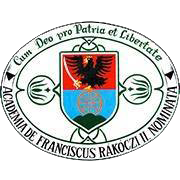Please use this identifier to cite or link to this item:
https://dspace.kmf.uz.ua/jspui/handle/123456789/3315Full metadata record
| DC Field | Value | Language |
|---|---|---|
| dc.contributor.author | Yurii Chotari | en |
| dc.contributor.author | Чотарі Юрій | uk |
| dc.contributor.author | Csatáry György | hu |
| dc.date.accessioned | 2024-02-05T11:20:59Z | - |
| dc.date.available | 2024-02-05T11:20:59Z | - |
| dc.date.issued | 2021 | - |
| dc.identifier.citation | In Україна: культурна спадщина, національна свідомість, державність. 2021. Випуск 34. c. 13-27. | en |
| dc.identifier.issn | 2223-1196 | - |
| dc.identifier.other | DOI: 10.33402/ukr.2021-34-13-27 | - |
| dc.identifier.uri | https://dspace.kmf.uz.ua/jspui/handle/123456789/3315 | - |
| dc.description.abstract | Abstract. The details of the history of the Rákóczi War of Independence concerning cities engage researchers even today. The history of the war in relation to cities is a less researched topic. Many open questions regarding the history of Berehove still need to be clarifi ed, including the period of the Rákóczi War of Independence. The aim of our research is to present a section of the historical past of the town of Berehove with the help of new archival sources, which show the uniqueness of the history of our region and the country. The centre of Bereg County was the third scene of the Kuruc fl ag-unfolding. On the one hand, the modest source base, on the other hand, the unanswered questions raised make our theme topical. In order to reconstruct the contemporary history of Berehove, we used primary sources and contemporary diaries, which are available in the Transcarpathian State Archives. Therefore, we present the events with the help of archive sources and academic literature. Berehove’s role in the war of independence is signifi cant as it was the fi rst town to get under the insurgents’ rule, Ferenc Rákóczi II also maintained a castle here and many inhabitants of the town became Kuruc warriors. In our study, we processed the transition of Berehove, the fi rst Kuruc town, to the side of the war of independence and the consequences of this. The chief judge of the town, in whose hands the military or police force was not yet concentrated at the time, was among the fi rst to stand by the side of the national liberation war, followed by several residents of the town after the fl ag-unfolding. The results include a description of the letters written to the prince by the people of the town and the answer given to them, where the most burning problems of the poor city dwellers appear. Furthermore, tracking the fate of the town’s chief judge after the war of independence is also described in the paper. Berehove has preserved the cult of the Rákóczi War of Independence for centuries, as many monuments testify to this day and it is revived every year. | en |
| dc.language.iso | en | en |
| dc.publisher | Інститут українознавства ім. І. Крип’якевича НАН України | en |
| dc.relation.ispartofseries | ;Випуск 34. | - |
| dc.rights | Attribution-NonCommercial-NoDerivs 3.0 United States | * |
| dc.rights.uri | http://creativecommons.org/licenses/by-nc-nd/3.0/us/ | * |
| dc.subject | Ferenc Rákóczi II | en |
| dc.subject | the Rákóczi War of Independence | en |
| dc.subject | the Rákóczi cult | en |
| dc.subject | Berehove | en |
| dc.subject | memorial places of the Rákóczi era in Berehove | en |
| dc.title | The Rákóczi war of independence (1703–1711) and its cult in Berehove, Transcarpathia (Ukraine) | en |
| dc.title.alternative | Війна під проводом Ференца Ракоці (1703–1711) за незалежність та її культ у місті Берегове Закарпатської області | en |
| dc.type | dc.type.researchStudy | en |
| Appears in Collections: | Csatáry György | |
Files in This Item:
| File | Description | Size | Format | |
|---|---|---|---|---|
| Csatary_Gy_The_Rakoczi_War_of_Independence_1703_1711_and_its_cult_in_Berehove_2021.pdf | In Україна: культурна спадщина, національна свідомість, державність. 2021. Випуск 34. c. 13-27. | 893.79 kB | Adobe PDF | View/Open |
This item is licensed under a Creative Commons License





